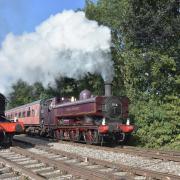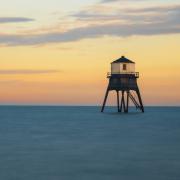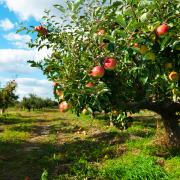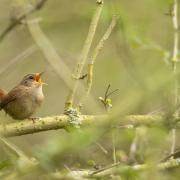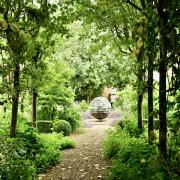As a part of my ‘Wild Walk’ column, I usually include the distance of the walk and time it will take. However, when it comes to the Hockley Woods, these details are up to you. Such is the natural beauty that one could happily walk all day if their legs would carry them.
Even many local people are unaware that Hockley Woods were, in fact, a group of woods, each in separate ownership and divided by earth banks which still survive; for example, in the 17th century Hawkwell Wood was owned by the Earl of Warwick, whereas Beeches (also known as ‘Beaches’) Wood belonged to Beaches Manor, Rawreth. Other adjoining woods include Great Bull Wood and Parson’s Snipe. Together, these make up the largest remaining intact area of wildwood which covered much of Essex after the last Ice Age, 10,000 years ago.
The woods are an intricate mosaic of trees. Oak and sweet chestnut grow on the higher ground, birch on the acidic soils and willow and hazel billow along the streams. Grey squirrels build their dreys up in the treetops. These oaks were used to construct parts of Southend Pier in the 19th century.
The southern edge of the wood is shady, but further in there are glades where the trees have been recently coppiced – a process ongoing since Saxon times. This has allowed shrubs and wildflowers (like the small yellow flowers of cow-wheat) to grow which are a lifeline for the rare heath fritillary and other butterflies. Bats also benefit from coppicing, which hawk for insects on summer evenings. In early spring some banks are carpeted with the dainty pale flowers of wood anemones and succeeded by the drooping beauty of English bluebells, which look as if they could ring when brushed past.

Just by the car park (simmer.vent.plea) – in the shade of mature trees – there is a large playground, many benches and a few intricate wood carvings can be found in the wood. Also, if you like exercising outdoors, it is the location for the Hockley Woods parkrun – a free, weekly, timed 5 km running event held every Saturday at 9 am.
Now, would it be nearly Halloween without a couple of ghosts? These woods are said to be haunted by a friendly ghost called Silas – so friendly in fact that dogs supposedly run up to the rustling sounds of the ghost with tails wagging. Other spooky sightings through the decades have included Anne Boleyn, without her head, walking through the wooded corridors which were once used for hunting by her husband, King Henry VIII who used this area to stock up his hunting grounds back in London.
Anyway, ghosts aside, when you have finished your walk, it is hard to resist the golden glow which shines into the treeline from the windows of The Bull Inn (goggles.claw.spelling), just next door to the car park of Hockley Woods. It is a beautiful weatherboarded pub, newly rebuilt after a fire in 2018. In keeping with the pub’s name, a faux bull’s head is fixed to the front of the building and as a child I would wonder whether the rest of the bull was on the inside. It is a cosy place to rest and refuel after a woodland walk. END OF ARTICLE
This column uses what3words, an easy way to identify precise locations. Every three square metres on Earth has its own unique combination of three words. To use, download the free app, or visit what3words.com


















